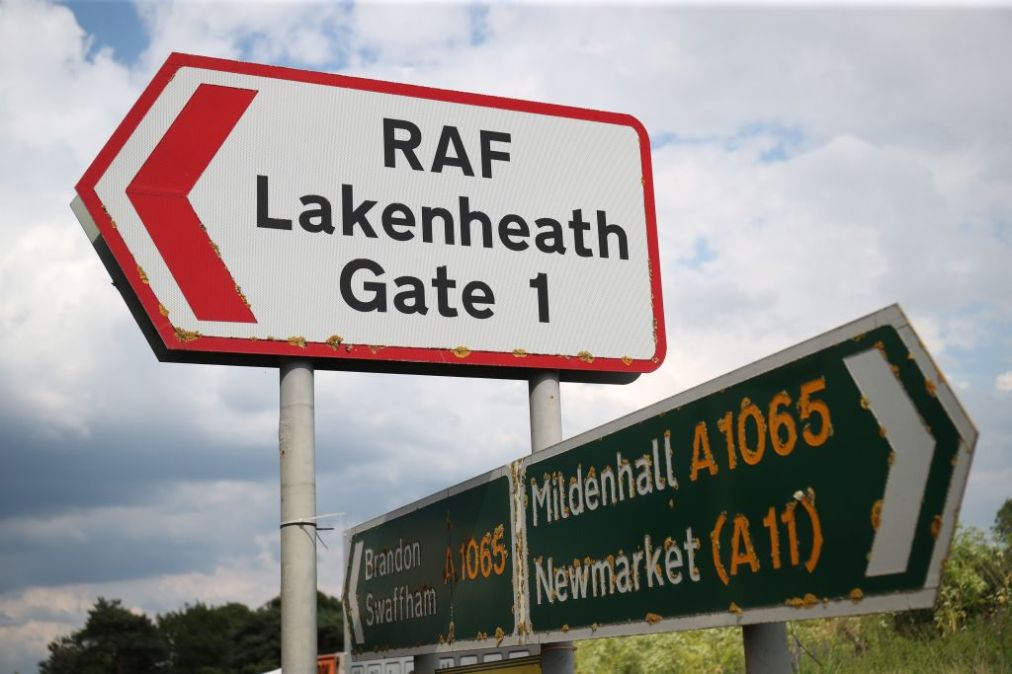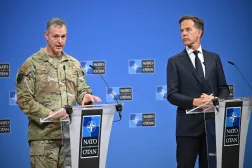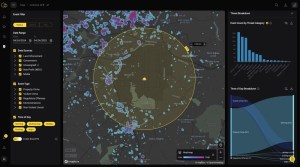US, UK jointly tracking mysterious drone incursions near England military bases

U.S. and U.K. military personnel have been actively monitoring installations around and airspace over Royal Air Force Lakenheath, RAF Mildenhall, RAF Feltwell and RAF Fairford for mysterious small drones that have been repeatedly spotted near those bases since Nov. 20 and are yet to be attributed to any adversarial or other sources.
But so far, there’s been no associated operational or safety impacts to troops on the ground there, defense officials told reporters Tuesday.
“The U.S. military are guests in England … at the indication of the government of the United Kingdom. So, certainly we’re working very closely with the authorities there. We are taking it seriously. We’re monitoring and taking appropriate measures,” Pentagon press secretary Maj. Gen. Pat Ryder said at a briefing Tuesday afternoon.
Beyond that, he and other American and British defense officials who spoke to DefenseScoop about the incursions this week declined to share explicit details about the type of drones or their features — or the tactics and procedures the U.S. and U.K. forces could apply to counter them.
The first reports of these still-unexplained unmanned aerial system capabilities surfaced about a week ago in notable locations where the two militaries and some of their closest allies are jointly operating. Among other U.S. assets deployed across these bases, Lakenheath is headquarters for the Air Force’s 48th Fighter Wing, deemed the “foundation of USAFE’s combat capability.”
“The number of systems has fluctuated, and they have ranged in sizes and configurations. Our units continue to monitor the airspace and are working with host-nation authorities and mission partners to ensure the safety of base personnel, facilities and assets,” a spokesperson for Air Forces in Europe and Africa told DefenseScoop in an email Tuesday.
They added that, to date, installation leaders have determined that none of the incursions have harmed residents, facilities or assets on any of the bases.
In response to questions at the Pentagon press briefing, Ryder told DefenseScoop: “Right now, the assessment is that these drones have had no operational impact or safety impact on our personnel at any of these facilities — and we’re keeping a close eye on them.”
The press secretary would not comment on whether these UAS appeared to be the same as or similar to those that were detected over Langley Air Force Base in October.
Regarding defense mechanisms to pinpoint and take down the drones, Ryder said the U.S. and U.K. militaries have a variety of methods at their disposal — and that they are committed to protecting personnel and facilities.
Spotlighting the emerging and historic nature of this threat, Ryder noted that the Defense Department and Federal Aviation Administration are beginning to cooperatively explore — “in this modern era of small aircraft” — the best approach to ensure they are responsibly protecting all assets, without assuming every new aircraft is a threat.
“I have a very close relative of mine who’s a drone pilot, and he flies his drone all over and does amateur photography,” he said.
“Just to kind of put this into context, even here in the United States, if there are drones that are being flown by hobbyists or some other entity, you want to make sure that you’re doing due diligence — not only to protect yourself and the safety of others — but also using appropriate measures in order to not inadvertently create second-order effects, or in other words, potentially harming the civilian communities in which we operate in and around,” Ryder told DefenseScoop.
Spokespersons from the U.K.’s Ministry of Defence on Tuesday did not confirm whether they have determined the source of the latest drones reported or how the military forces are planning to counter any future incursions.
“We take threats seriously and maintain robust measures at defence sites. We are supporting the U.S. Air Force response,” an MOD spokesperson told DefenseScoop in an email.






